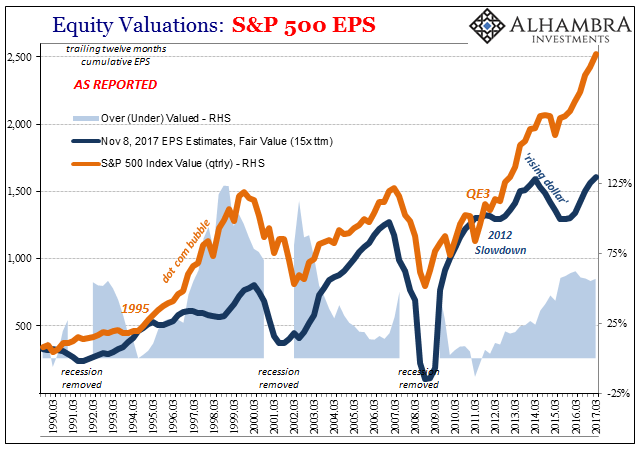The year 1995 wasn’t exact a good year to remember. There was the Oklahoma City bombing, the San Diego tank rampage, the New Jersey Devils winning the Stanley Cup in a lockout shortened NHL season, and some former Buffalo Bills running back named OJ getting into trouble out in LA. Steve Forbes would announce his candidacy to challenge President Clinton that September.
Despite all that, in 2017 both the bond and stock markets are almost desperate to repeat the year, at least its financial and economic characteristics. To be more precise, it is stock investors who are betting on a 1995 while bond investors are holding out against that scenario – leaving Economists and the media to openly cheer for it and directly against them.
Though it started in late ’94, the bond “massacre” that year still stings in bond traders’ collective memories. Alan Greenspan’s Fed has begun to raise interest rates after several years of very low federal funds, “stimulus” the central bank judged necessary because of a sluggish, almost jobless recovery (just ask President George H.W. Bush who Clinton defeated on “it’s the economy stupid”). That for many people is as compelling a setup as there may ever be.
There were questions in ’95 about the economy, but those would soon be answered in the affirmative. It was clearly growing again, so long bond rates sold off, hard, to reflect the economic opportunity of the strengthening growth cycle.
For stocks, it was also affirmation.

If we look at the current state of the stock market, at least as presented by the S&P 500, it is about as overvalued right now as it was in 1994 (defining “fair value” to be 15 times ttm earnings). Earnings had predictably slumped as is usual in the 1990-91 recession and like the economy overall were slow to rebound from it. Starting around 1993, however, EPS began to rise sharply so that by 1995 the index had actually achieved fair value.










Leave A Comment